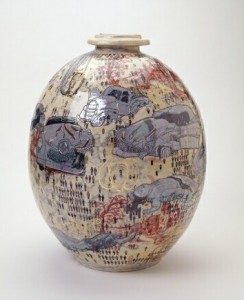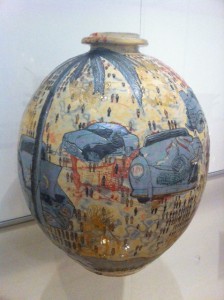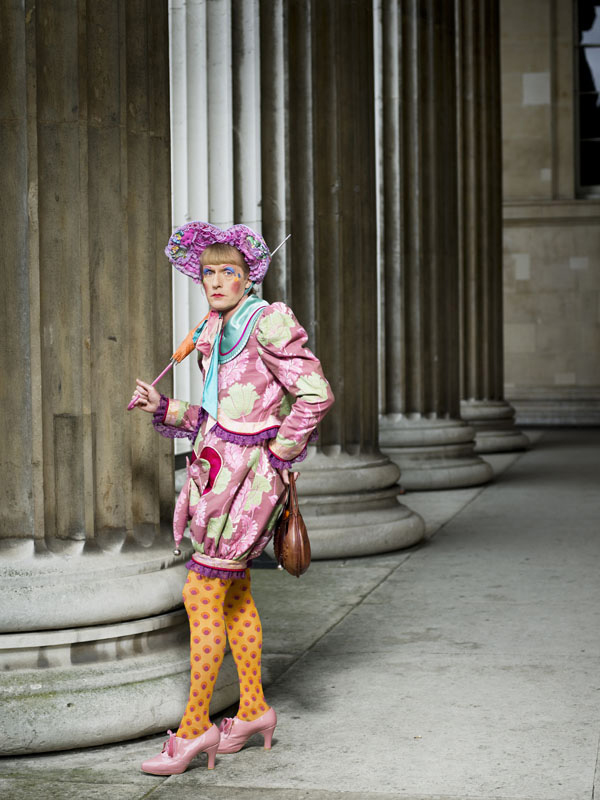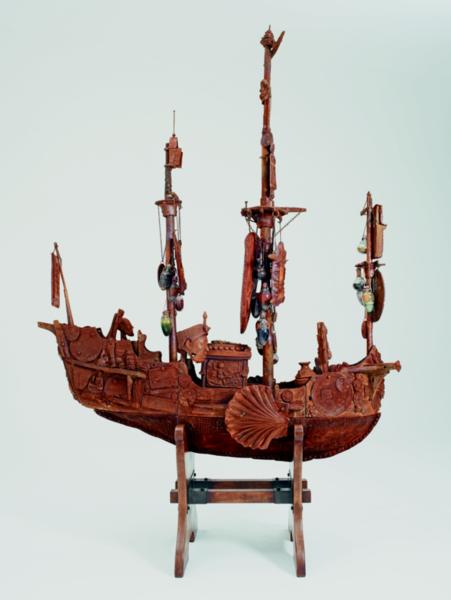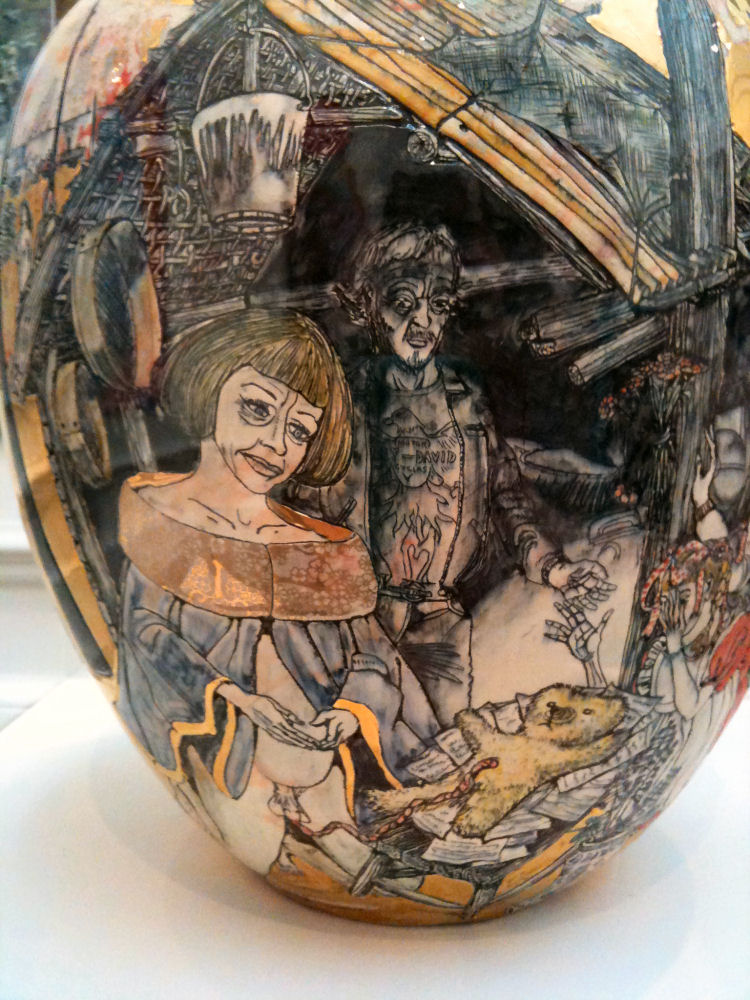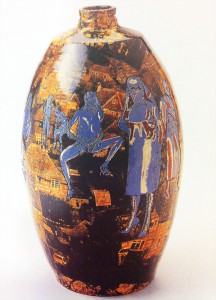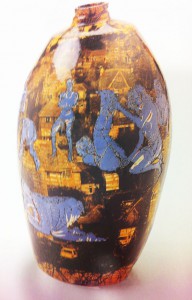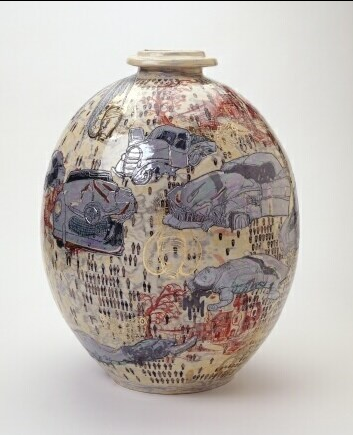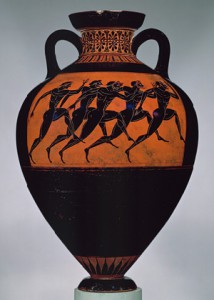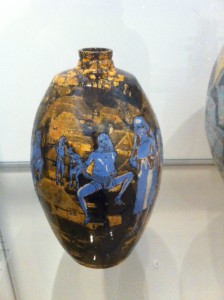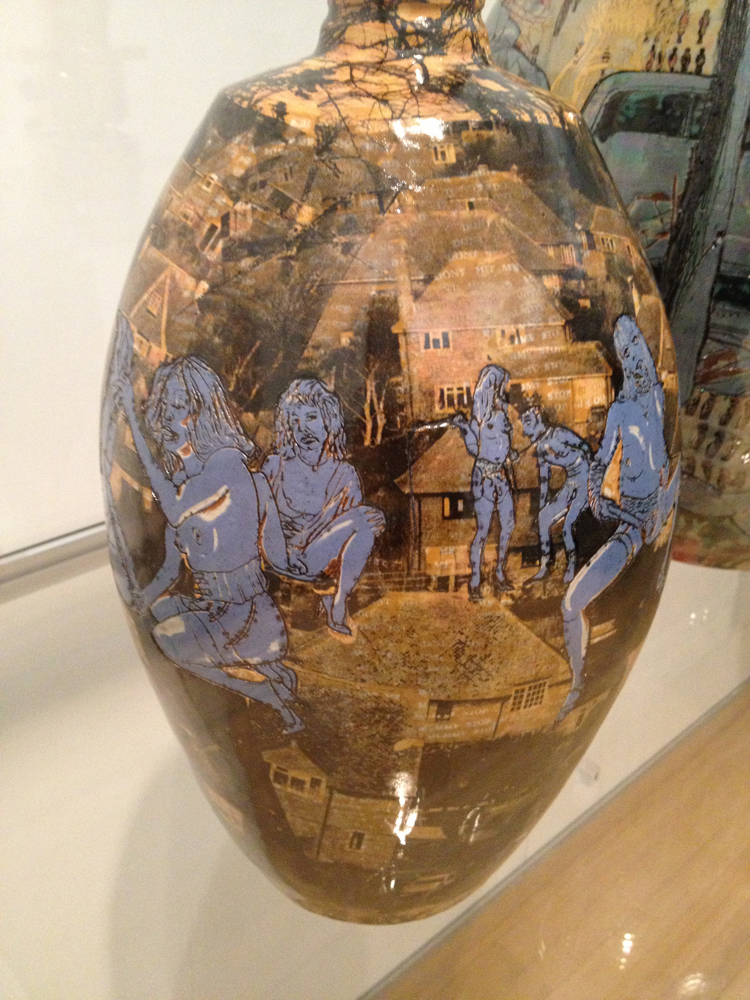After visiting the ‘Designing the Surface’ exhibition at the New Institute in Rotterdam I went to the Stedelijk museum in Amsterdam to visit their Design collection. In order to choose an artwork of interest and than relate it to one of the Acts of the book. I chose the work ‘’Floating world’’ of Grayson Perry.
I want to relate this artwork to the last Act (VI: Slim) I described: ‘’In which the future is superficial’’.
Grayson Perry, floating world.
At the first sight this pot appears to be a cute ceramic pot that you could recognize from your grandparent’s home collection. Conventional in form, colour, and usage of glace. But if you come closer to the pot, you might be shocked by the images of car accidents, penises and dead people. It is extraordinary to explore this kind of images on a cute pot like this.
You can recognize a controversial aspect in the title of the pot called: ‘’Floating world’’ which refers to: Ukiyo-e. Ukiyo-e (literal translation: floating world) is a genre of woodblock print and painting technic originating from the Japanese art
tradition. In this genre the hedonistic lifestyle of the high-class from the 17th till the 19th century is pictured. The high class decorated their homes with these images of their high society lifestyle. Perry makes a link to this subject. The artist is referring to the original Ukiyo-e style in which artworks are functioning as decorative pieces. Perry’s work could been seen as traditional and decorative from a distance. You cannot see what is going on at the surface from a far distance. But if you get really close, you can see the provoking images. By then you see that you are not watching a conventional piece of decorative ceramics, but something that reacts on this. As a platform for protest.
The Ukiyo-e is showing the nice high class lifestyle, and this piece suddenly displays violence, pain, and sex. We have to know that we have to take a closer look to designed objects to understand its origins. If you don’t do this, you might risk that you give you grandma a ceramic pot full of penises for her 80th birthday. A fun anecdote to tell: My own grandmother was a very conservative woman. In the 60’s with the summer of love and all the hippies my father had long hair and my grandmother really disliked this. She disliked anything that had anything to do with hippies. But then one day, when she was in a more emphatic mood, she gave my father a tie-dyed t-shirt because she thought he would like it. But what she never knew, there was a text and an image pressed on the t-shirt, not easy to read though: ‘’save water: shower with a friend’’ and four feet wrestling.
